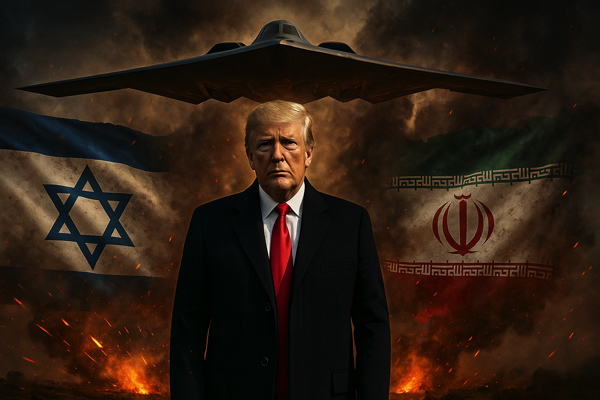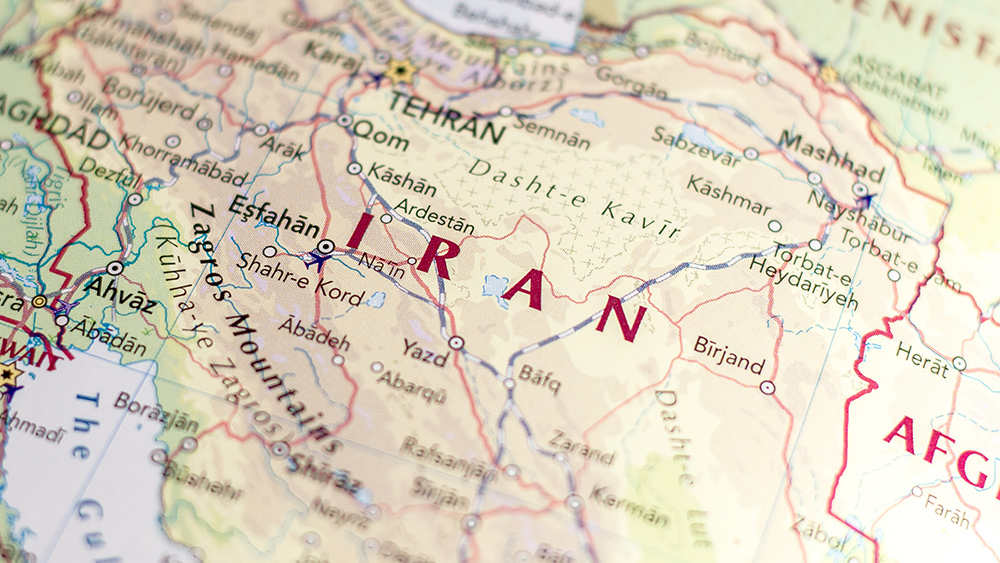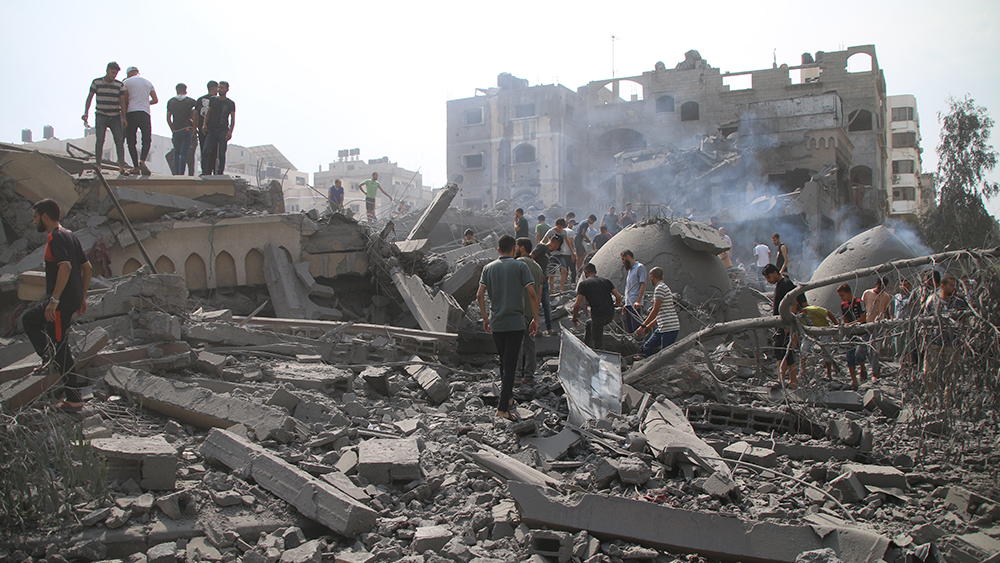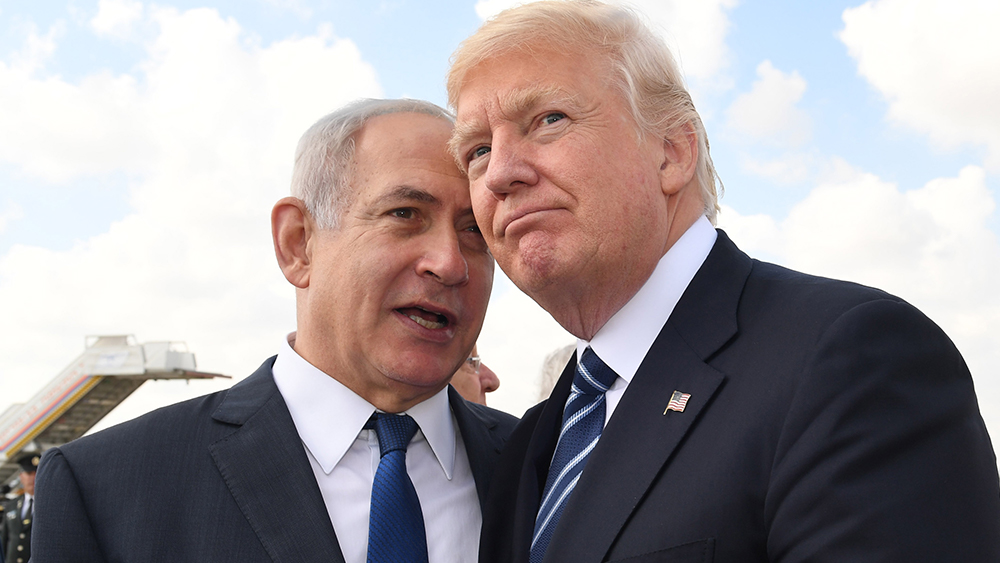 Parler
Parler Gab
Gab
- U.S. forewarned Iran of nuclear strikes, aiming to limit escalation amid growing regional tensions.
- Trump administration notified Tehran of "one-off" attack on Fordow, Natanz and Isfahan facilities.
- Iran evacuated sites ahead of bombing. A senior source confirmed targeted locations were unmanned.
- American officials emphasized no regime change intentions, contrasting with Israel’s hardline stance.
- Regional analysts compare incident to 2020 Soleimani airstrike response, warn of unintended fallout.
Limited targeting, strategic messaging: Was this Trump’s signature approach?
The mission, coordinated between U.S. B-2 bombers and submarine-launched cruise missiles, relied on precision strikes to minimize collateral damage. Three B-2s deployed Massive Ordnance Penetrator (MOP) bombs on Fordow’s entrances and ventilation systems to collapse the mountain-based site. Submarines fired 30 Tomahawk missiles at Natanz and Isfahan’s facilities, which Israel had previously bombarded. President Donald Trump claimed victory in a live address, stating, “Those three sites were completely obliterated,” but experts caution success remains unclear. The International Atomic Energy Agency (IAEA) declined to comment, while Iran’s Atomic Energy Organization (AEOI) dismissed the attack as a “brutal act violating international law” and vowed to accelerate its nuclear ambitions. The U.S.-Iranian communication ahead of the strike mirrors Trump’s 2020 tactic with Soleimani. After that assassination, Tehran launched ballistic missiles at U.S. bases in Iraq but halted further escalation, opting for symbolic retaliation. Observers speculate Iran’s current restraint may reflect similar calculations.A delicate dance with fire: Historical precedents and regional risks
The 2020 Soleimani precedent raises concerns, as Tehran’s actions in the aftermath disrupted shipping lanes and fuel prices but avoided direct war. This time, however, Iran is under simultaneous Israeli assault, complicating its response calculus. “The U.S. strike weakens both Israeli aggression and the appearance of American appeasement,” said Alastair Crooke, a Middle East analyst, on a recent podcast. “But it’s unclear whether Iran’s rulers will see this as a detente overture or a renewed provocation.” Iran’s options for retaliation include:- Ceasing IAEA inspections, as the AEOI has hinted.
- Coordinated attacks with Houthi forces in Yemen to block Red Sea shipping.
- Targeting Israel’s Dimona reactor, though this risks direct U.S. involvement.
Washington’s combating critics: Left dismisses “illusory peace”
Critics on both sides of the political divide question the long-term efficacy of Trump’s approach. Left-wing publications argue the warning and limited strike validate Iran’s defiance, while hawkish voices in Israel claim the attack allowed Tehran to preserve its nuclear program’s core. “We can only hope this is a restrained exchange and not a first step toward World War III,” remarked former State Department analyst Chris Menahan. “The administration’s messaging—‘one-off’ but with vague threats—keeps everyone guessing, which is dangerous in geopolitics.”A truce or a tinderbox?
The June 21 strikes underscore Trump’s confrontational diplomacy, blending force with warnings to avoid protracted conflict. By alerting Tehran in advance, the administration aimed to present itself as a stabilizing force, contrasting with the “forever wars” image of prior eras. Yet, given Iran’s brittle domestic stability and regional ambitions, even a “one-off” strike could spiral into broader instability. With the White House insisting on dialogue only if Iran halts its nuclear program—and Tehran demanding Israel stand down first—the path forward seems both contentious and uncertain. As analysts note, the real test will be whether this staged brinkmanship induces the “peace” Trump envisions or merely resets the timetable for the next explosion. Sources for this article include: InformationLiberation.com Amwaj.mediaStudy: Digital addiction among children linked to higher risk of suicidal thoughts
By Ava Grace // Share
Iran threatens “FINAL WAR” with Israel as Gaza ceasefire talks gain momentum
By Willow Tohi // Share
The Truman Show Collapses: Reality unveiled as global deception falters
By Finn Heartley // Share
U.K. unveils controversial calorie-cutting plan amid obesity crisis
By Willow Tohi // Share
Governments continue to obscure COVID-19 vaccine data amid rising concerns over excess deaths
By patricklewis // Share
Tech giant Microsoft backs EXTINCTION with its support of carbon capture programs
By ramontomeydw // Share
Germany to resume arms exports to Israel despite repeated ceasefire violations
By isabelle // Share










